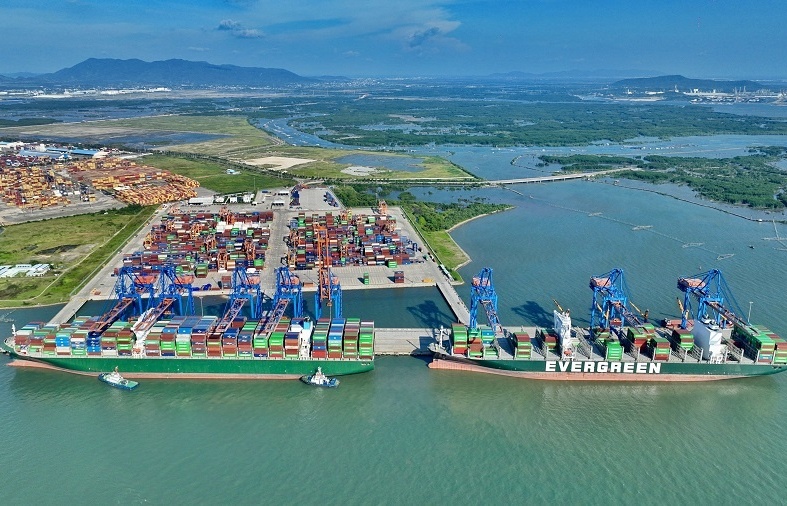SMEs look to kick up a gear
 After successful implementation of the first SME development plan (2006-2010), the Ministry of Planning and Investment (MPI) is devising the second SME development plan for 2011-2015.
After successful implementation of the first SME development plan (2006-2010), the Ministry of Planning and Investment (MPI) is devising the second SME development plan for 2011-2015.
“Compared to the previous plan, this new plan witnesses marked improvements and contains clearer and more explicit targets,” said MPI Business Development Department expert Nguyen Thi Viet Hue.
Department deputy chief Nguyen Hoa Cuong expected future SME development to satisfy quantity and quality development goals.
Cuong said unlike the previous period when only 14 localities presented explicit plans to propel their SME development, many localities now have taken the initiative in mapping out their SME development plans in collaboration with the business community, diverse business associations and resorting to support from economic experts.
Accordingly, eight groups of measures to ignite SME development were presented. They were perfecting legal framework on market entry and operation of SMEs, promoting financial and credit access and bettering capital usage efficiency, supporting technology innovations, fostering the establishment of industrial clusters and increasing land access.
Besides these measure packages, the MPI is reportedly proposing the government assign ministries, sectors and localities to come up with 13 SME support programmes during 2011-2015 at a total cost of VND1,130 billion ($53.8 million), not including technology innovation programmes. Of them, VND380 billion ($18.1 million) will be pumped into human resources training and VND80 billion ($3.8 million) into information support.
“Many countries have founded a financial organisation operating as an assistance or development fund to uphold SME development. We are studying the world practice and will shortly propose the government give birth to a similar fund in Vietnam to spur SME growth,” said Cuong.
To reach SME development goals during 2011-2015, Vietnam Chamber of Commerce and Industry general secretary Pham Thi Thu Hang said a string of measures needed to be handled by the government, ministries, sectors and local governments. For instance, the policy on industrial development and enhancing national comparative advantages must be set based on SME development fundament, tax preferences must assure rationality, simplicity and transparency or avoiding to intervene deeply into enterprises’ operations.
“Experiences implementing the 2006-2011 SME development plan show that localities with rapid economic development and stable year-on-year growth in budget revenue are those in which SME development captured a great deal of attention from management authorities,” Hang said.
|
According to MPI figures, as many as 622,000 SMEs were registered to come into existence, of them around 448,000 SMEs were operational by late 2011, far exceeding the target set in the first SME development plan. From 2011-2015, around 350,000 SMEs are expected to come into being to achieve the goal of having around 600,000 SMEs up and running by the end of 2015. SMEs are set to generate 25 per cent of the country’s total export value, contribute 40 per cent of gross domestic product (GDP) and 30 per cent of total budget revenue, creating jobs for 3.5-4 million labourers. |
What the stars mean:
★ Poor ★ ★ Promising ★★★ Good ★★★★ Very good ★★★★★ Exceptional
Related Contents
Latest News
More News
- Vietnam’s economy on track for 6.5 per cent growth despite Typhoon Yagi, says HSBC (October 01, 2024 | 16:46)
- Vietnam urges China to expand market access for agricultural products and strengthen trade ties (October 01, 2024 | 16:42)
- IMF predicts Vietnam's economic growth to reach 6.1 per cent in 2024 (September 30, 2024 | 18:26)
- Deli Group breaks ground on $270 million factory in Hai Duong (September 30, 2024 | 18:17)
- Government considering tax on multiple properties (September 27, 2024 | 20:17)
- Accuracy more vital than ever in dawn of AI (September 26, 2024 | 20:44)
- Vietnam remains attractive destination for US businesses (September 26, 2024 | 20:23)
- New innovation centre inaugurated during HEF 2024 (September 25, 2024 | 09:00)
- China's Geely to build $168 million automobile facility with Tasco in Thai Binh (September 24, 2024 | 19:03)
- Spate of claims made in typhoon aftermath (September 19, 2024 | 17:00)




 Tag:
Tag:


















 Mobile Version
Mobile Version